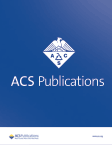Ionizing Radiation Exposure at Interventional Cardiology Practices in Bangladesh
IF 3.4
Q2 PUBLIC, ENVIRONMENTAL & OCCUPATIONAL HEALTH
引用次数: 0
Abstract
With the use of traditional thermoluminescence dosimeters (TLDs), this study was carried out to determine the effective dose and its trend in order to ensure radiation safety at interventional cardiology practices in Bangladeshi hospitals. Between 2015 and 2019, 1015 radiation workers in Bangladesh who were under observation for their personal dose equivalent were reported. There were 417 physicians among them, while the remaining personnel included radiological technologists, physicists, and other medical staff members. To measure the exposure dose, a conventional TLD-100 (LiF:Mg, Ti) was used. A Harshaw TLD reader (Model 4500) was used to read the TLDs on a quarterly basis. All of the monitored workers, who made up around 19.11% of the total, had ionizing radiation exposure below the limit established by international organizations. The Mann–Kendall trend test and Sen’s slope estimator were also applied to the annual collective effective doses, and it showed a decreasing trend over the time frame. The current state of occupational exposure and its trends show that most workplaces have effective radiation protective measures in place.孟加拉国介入心脏病学诊所的电离辐射暴露情况
通过使用传统的热释光剂量计(TLD),本研究确定了有效剂量及其变化趋势,以确保孟加拉国医院介入心脏病学实践中的辐射安全。据报告,2015 年至 2019 年期间,孟加拉国有 1015 名辐射工作人员接受了个人剂量当量观察。其中有417名医生,其余人员包括放射技术人员、物理学家和其他医务人员。为了测量照射剂量,使用了传统的 TLD-100 (LiF:Mg, Ti)。哈肖公司的 TLD 读取器(4500 型)每季度读取一次 TLD。所有接受监测的工人(约占总人数的 19.11%)的电离辐照量均低于国际组织规定的限值。曼-肯德尔趋势测试和森氏斜率估算器也被应用于年度集体有效剂量,结果显示在一段时间内呈下降趋势。职业辐照的现状及其趋势表明,大多数工作场所都采取了有效的辐射防护措施。
本文章由计算机程序翻译,如有差异,请以英文原文为准。
求助全文
约1分钟内获得全文
求助全文
来源期刊

ACS Chemical Health & Safety
PUBLIC, ENVIRONMENTAL & OCCUPATIONAL HEALTH-
CiteScore
3.10
自引率
20.00%
发文量
63
期刊介绍:
The Journal of Chemical Health and Safety focuses on news, information, and ideas relating to issues and advances in chemical health and safety. The Journal of Chemical Health and Safety covers up-to-the minute, in-depth views of safety issues ranging from OSHA and EPA regulations to the safe handling of hazardous waste, from the latest innovations in effective chemical hygiene practices to the courts'' most recent rulings on safety-related lawsuits. The Journal of Chemical Health and Safety presents real-world information that health, safety and environmental professionals and others responsible for the safety of their workplaces can put to use right away, identifying potential and developing safety concerns before they do real harm.
 求助内容:
求助内容: 应助结果提醒方式:
应助结果提醒方式:


